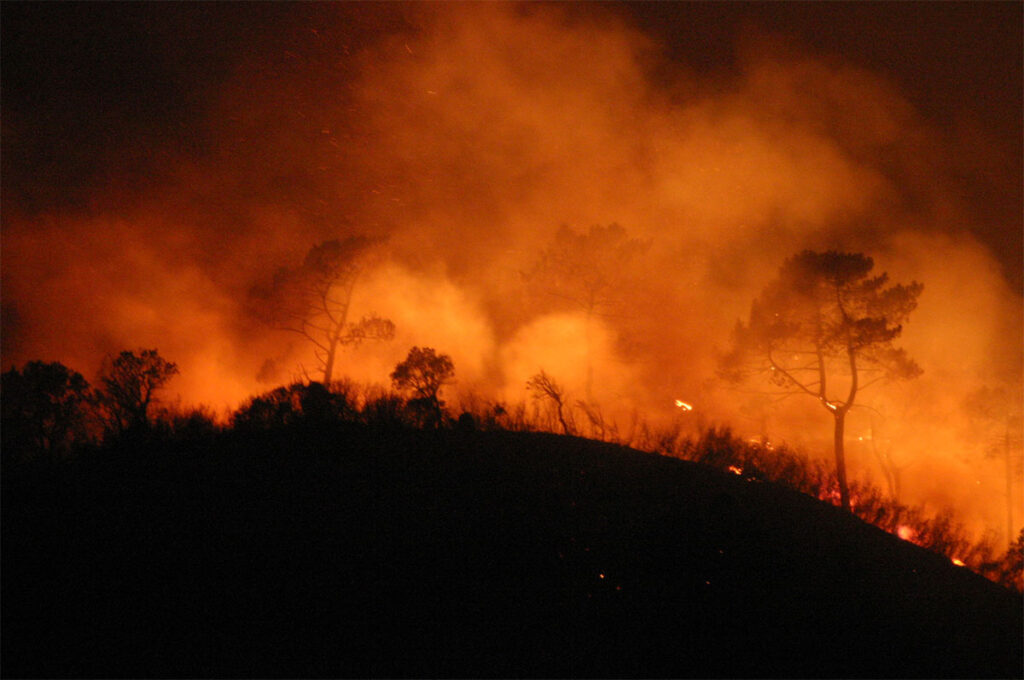Five years have passed under the devastating fires of the Pinhal Interior. Once the fires were extinguished, the media took charge of the event, this time with regard to the determination of civil and criminal liabilities, in relation to the fight against fires and the criminal offenses committed there subsequently in terms of reconstruction of the destroyed heritage.
However, we know almost nothing about the results of the Pinhal Interior Revitalization Program, the Collaborative Laboratory for the Pinhal Interior, the Interior Enhancement Mission Unit, and many other programs and sub-programs for territorial cohesion and rural development in the interior.
I have already written in other articles (Público, 7 February 2018 and Observador, 11 March 2018) that we are a long-standing bipolar country, that desertification and abandonment crossed the entire XNUMXth century when the provincialism of our rural petty bourgeoisie got married, for many good years, with the urban bourgeoisie of the industrial belts of Lisbon and Porto.
That's when the emigration in and out began, to the slums inside and the slums outside. There, the social stigma about the so-called labregos began. The abandonment of our villages has, therefore, at least six or seven decades of painful construction.
The fireworks tragedy of 2017 and the great spectacle of televisions (and drones) associated with it revealed to us the hidden country that our incompetence and our shame had relegated to the great chest of oblivion and invisibility. The tragedy of the fires and the high-definition images captured by the drones gave us back the dignity of those bodies broken by time and suffering.
Unfortunately, our villages only exist because they burn. The invisibility of the territories of the deep interior allows almost anything, even the almost total abandonment as is now proven. “As they don't exist” there is no exercise in intelligibility about them, one arrives almost always in a state of emergency and on the edge of the abyss, as happened now.
Unfortunately, in the face of this great spectacle of the media, the visibility of tragedy is only paralleled by the invisibility of abandonment. The intrusion is such that we have the feeling that the fire has broken out several times.
In a long-standing bipolar country, almost everything depends on the Central State or the local State. In other words, there is a lot that has to remain invisibility because there are simply no resources for everything. And those who remain invisibility are those who do not disturb the peace of the already established clientele and corporate system.
The interior of the country is not part of this clientele system or is only marginally part of it to "shush" some local baron with the loudest voice and, therefore, also with greater access and political visibility.
Unfortunately, fires of this magnitude have the serious inconvenience of bringing the “living-dead” of our oblivion to the surface. Its long invisibility, which only fires disturb, hides a long-announced death. It is a noisy, cynical and cowardly silence that hides behind countless protective curtains. Thus, the central power hopes to be able to “manage more rationally” its scarce resources.
According to their logic, without visibility, it is easier to manage scarce resources and distribute gifts immediately to those with greater visibility. In other words, territories also collapse, because these territories were silently and patiently deterritorialized.
Unfortunately, this is just another episode because the convergence of climate change, demographic change and agro-industrial and forestry monocultures are paving the way for abandonment so that these territories are “finally captured” without it being necessary to prepare for their privatization. .
Unfortunately, in such a small country, where all territories, even the most remote ones, have distinctive signs and expectant resources, it is a crime against the homeland not to carry out an intelligibility exercise on these signs and resources, bringing them into the light of day, launching them in the regional and national public space, giving them the visibility that is necessary and all this in a “climate of perfect normality”.
Unfortunately, the Lilliputian universe of our small towns in the interior is a difficult terrain for the formation of stronger and more muscular communities of self-government. I have, however, the hope of common sense and the common sense of hope tells me that the creation of “intermunicipal communities”, placed between the local and regional levels, is an excellent pretext to reconsider the entire territorial policy of valorization of the interior. ; whereas the triangulation of these communities with polytechnics/universities and business associations is a good exercise in territorial intelligibility; whereas the CIM/NUTS III territorial contracts are a good programming and planning tool; that an actor-network and dedicated governance are two essential factors for good performance, as there is only competence if there is permanence.
As for the rest, dear reader, ask about the results of the Pinhal Interior Revitalization Program, the Collaborative Laboratory for the Pinhal Interior, the Interior Enhancement Mission Unit, and many other programs and sub-programs of territorial cohesion and rural development in the interior. . Fire gives us back the forgotten villages of our most remote and deep countryside in all their splendor. We now know that the villages existed because they burned.
And how many more will burn in this fire of oblivion?
Author António Covas is a Retired Full Professor at the University of Algarve




















Comments